The goal of this project was to explore the uses of carbon fiber while practicing my fabrication skills. This project turned out to be a great experiment and learning process, while still producing a nicely finished product.
I decided to make a carbon fiber skateboard (or short board) using similar construction methods to surfboards and race car spoilers. This means that I would use a polyurethane foam core with several layers of carbon fiber. However, there are certain methods that carbon fiber should be used that I will now clarify.
Carbon fiber has a type of weave that makes up the cloth. When it’s not cured, one can stretch this fabric in one direction very easily. If they try to stretch it in another direction, it appears to be very strong. When carbon fiber is being used to build a structure, several layers should be used with the weave oriented differently for the most strength. I utilized this philosophy when building my short board. This concept is demonstrated with the patterns outlined in the carbon fiber fabric.
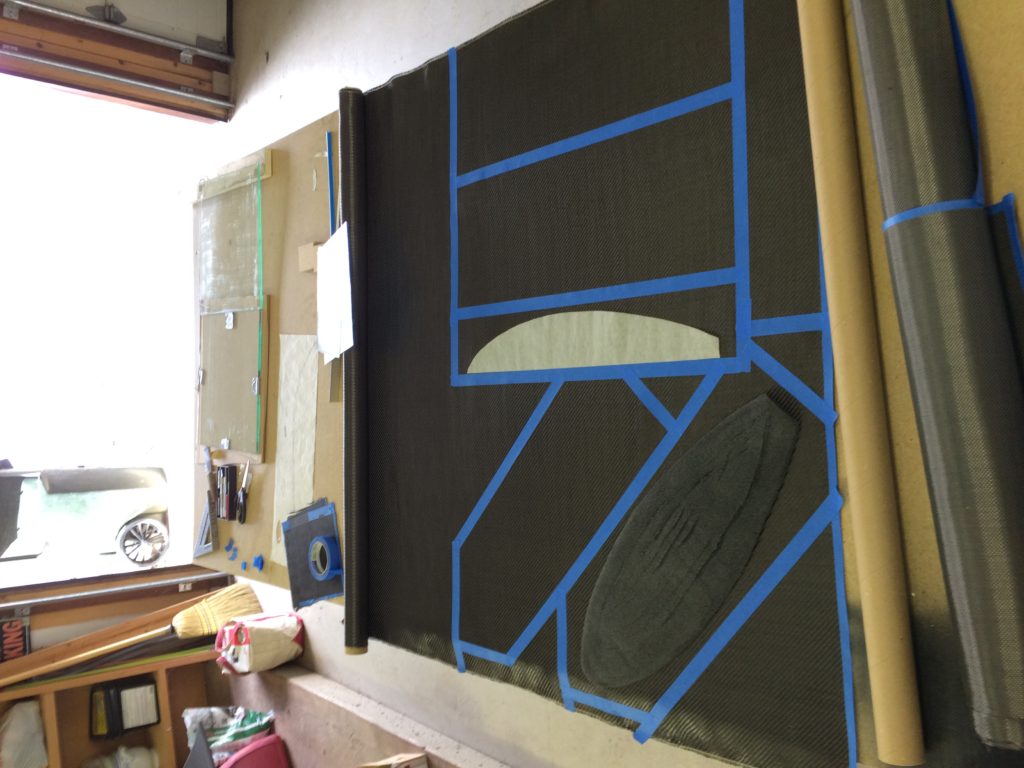
The first step was to carve the foam core from a plain sheet of polyurethane foam. This was done by hand and done by eye. If I were to do this again, it would be interesting to use a CNC router to get a perfect shape. When the shape was carved, I cut out two holes for a wood insert. The wood core would provide more strength for the truck mounting positions.
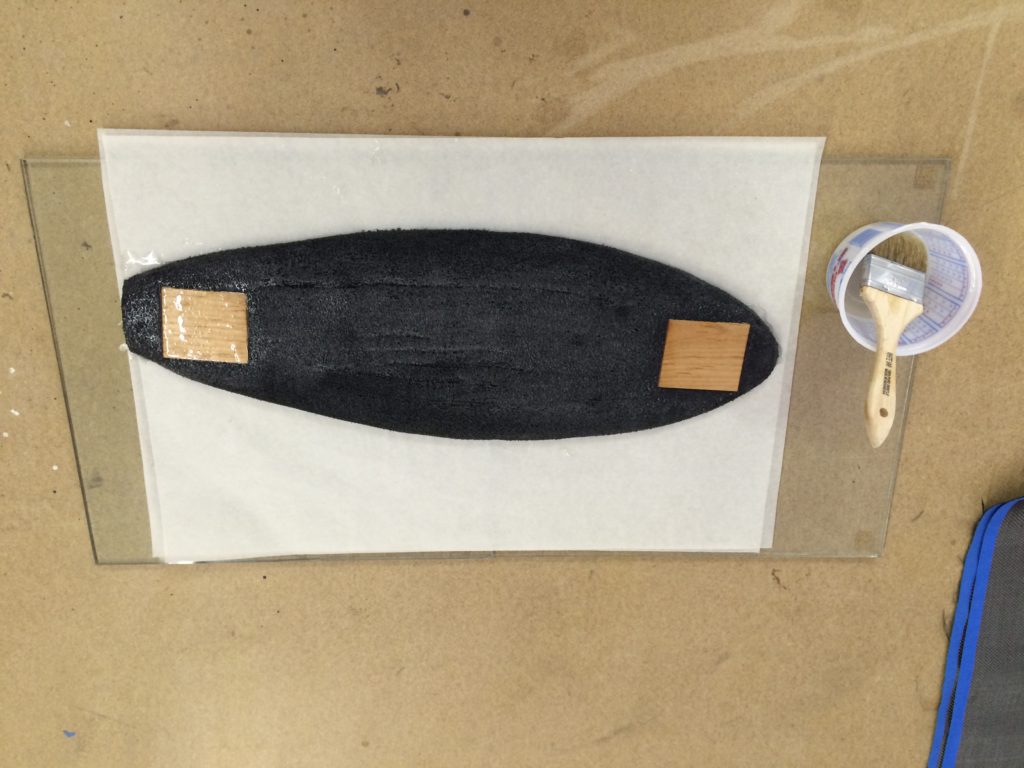 Once the wood cores were epoxied in place, I vacuum bagged 4 layers of carbon fiber to the flat side of the deck. I used a piece of glass as my “mold” to get a perfectly flat finish. Vacuum bagging requires a lot of consumable materials because of all the layers needed. The carbon and foam is covered in a peel ply fabric that lets resin flow through but does not bond to the resin. Then a sheet of release fabric is used to separate the vacuum bag material from the carbon. A felt or breather fabric is used to absorb excess resin and finally the vacuum bag encases all of this. In most cases all of these fabrics are only usable once, making carbon fiber products very expensive and time consuming.
Once the wood cores were epoxied in place, I vacuum bagged 4 layers of carbon fiber to the flat side of the deck. I used a piece of glass as my “mold” to get a perfectly flat finish. Vacuum bagging requires a lot of consumable materials because of all the layers needed. The carbon and foam is covered in a peel ply fabric that lets resin flow through but does not bond to the resin. Then a sheet of release fabric is used to separate the vacuum bag material from the carbon. A felt or breather fabric is used to absorb excess resin and finally the vacuum bag encases all of this. In most cases all of these fabrics are only usable once, making carbon fiber products very expensive and time consuming.
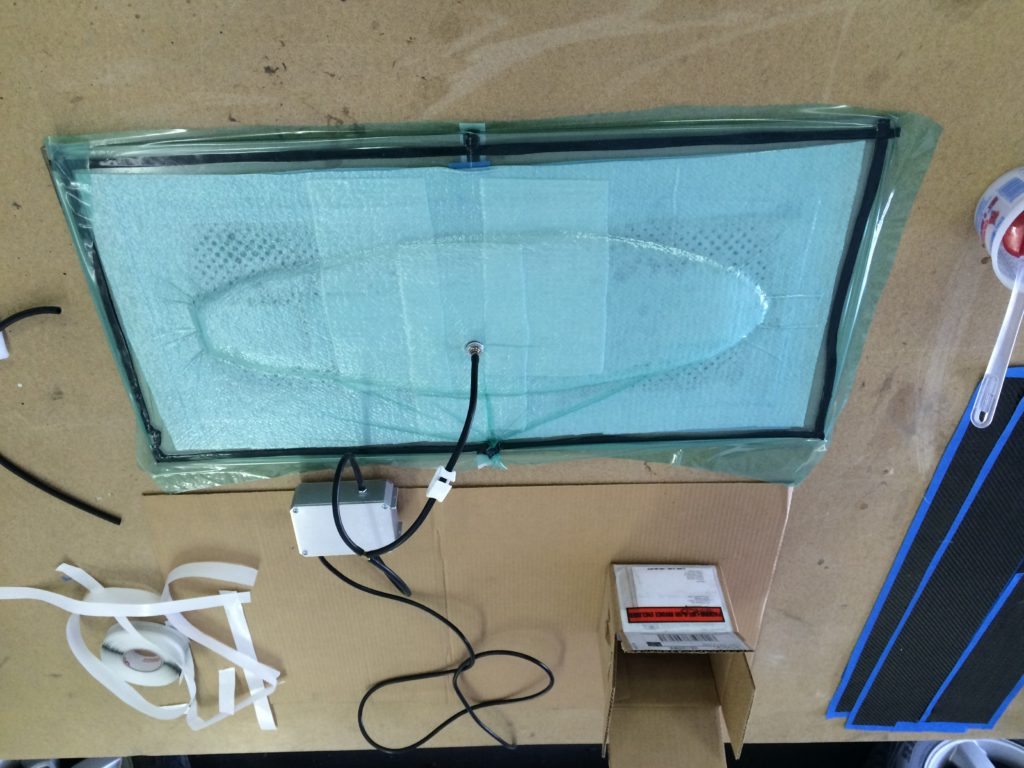 Once I had one side of the foam core bonded with carbon fiber, I did the same process to the other side to fully encase the foam core in carbon fiber.
Once I had one side of the foam core bonded with carbon fiber, I did the same process to the other side to fully encase the foam core in carbon fiber.
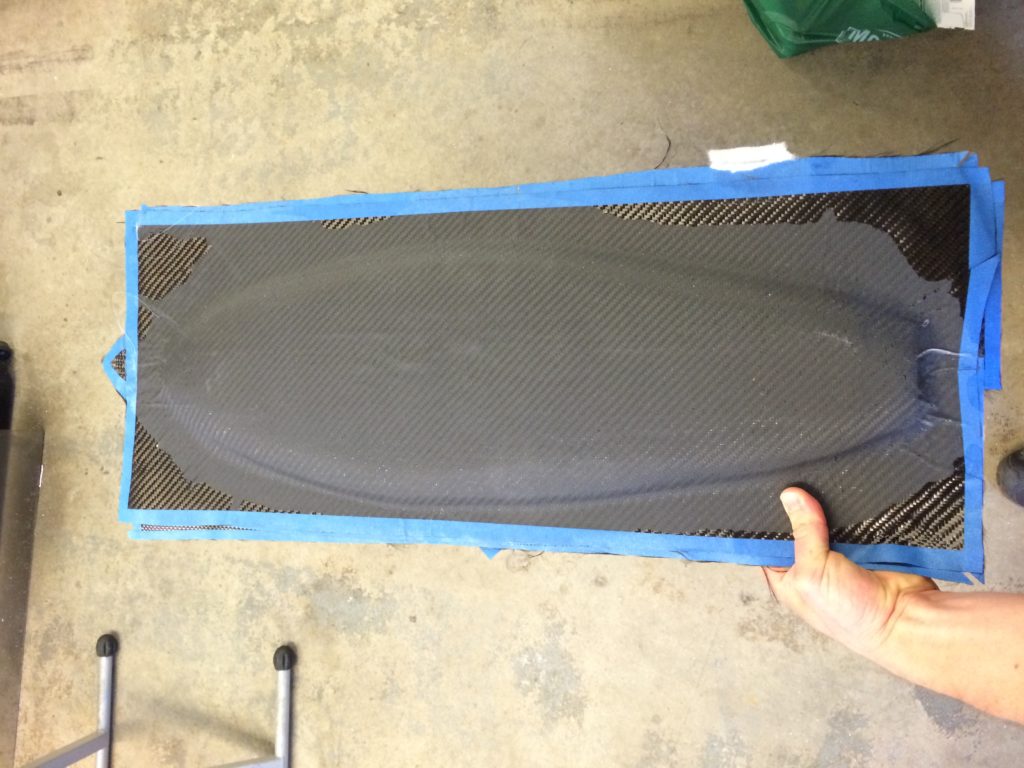
You might notice I made a “V” pattern with the carbon fiber weave on the top side of the deck. This was purely an aesthetic exploration that I’ve seen on several supercars.
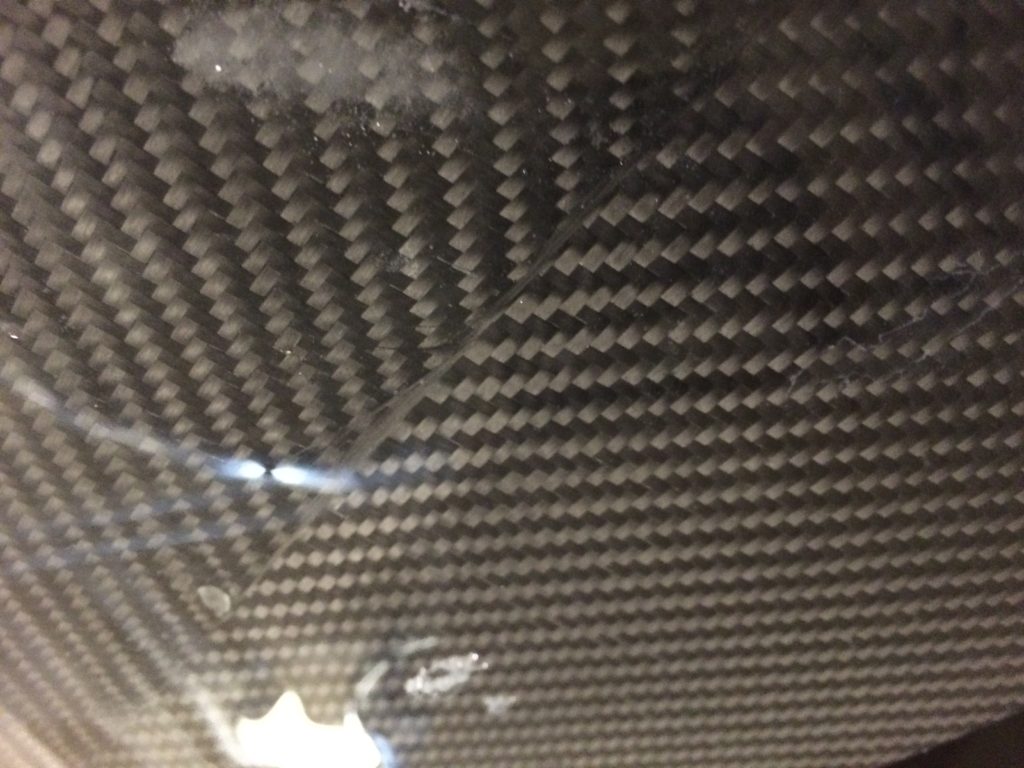 At this point, I sanded and wet sanded both the top and bottom until a very hard and smooth surface prevailed. This was perhaps the most time consuming part of this whole project. I was trying to get a really glossy coat, but the clear coats I was using wouldn’t properly bond to the epoxy resin used in the carbon layup. I later found out that automotive clear coat would be my best option, but I decided to try that on my next deck.
At this point, I sanded and wet sanded both the top and bottom until a very hard and smooth surface prevailed. This was perhaps the most time consuming part of this whole project. I was trying to get a really glossy coat, but the clear coats I was using wouldn’t properly bond to the epoxy resin used in the carbon layup. I later found out that automotive clear coat would be my best option, but I decided to try that on my next deck.
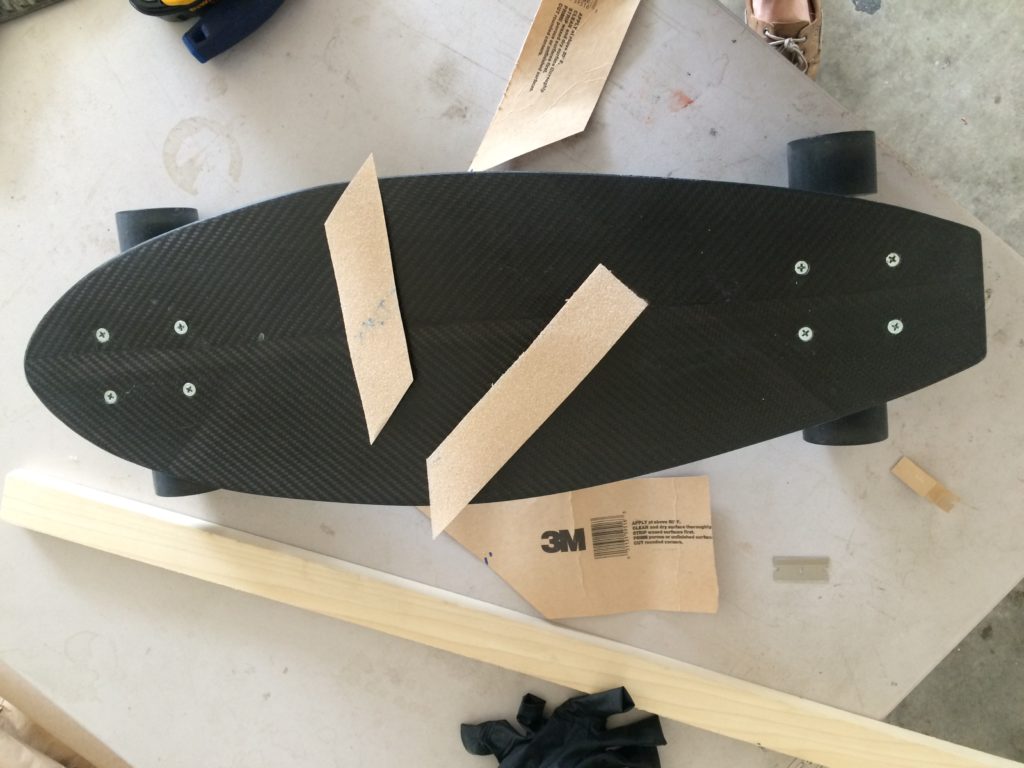
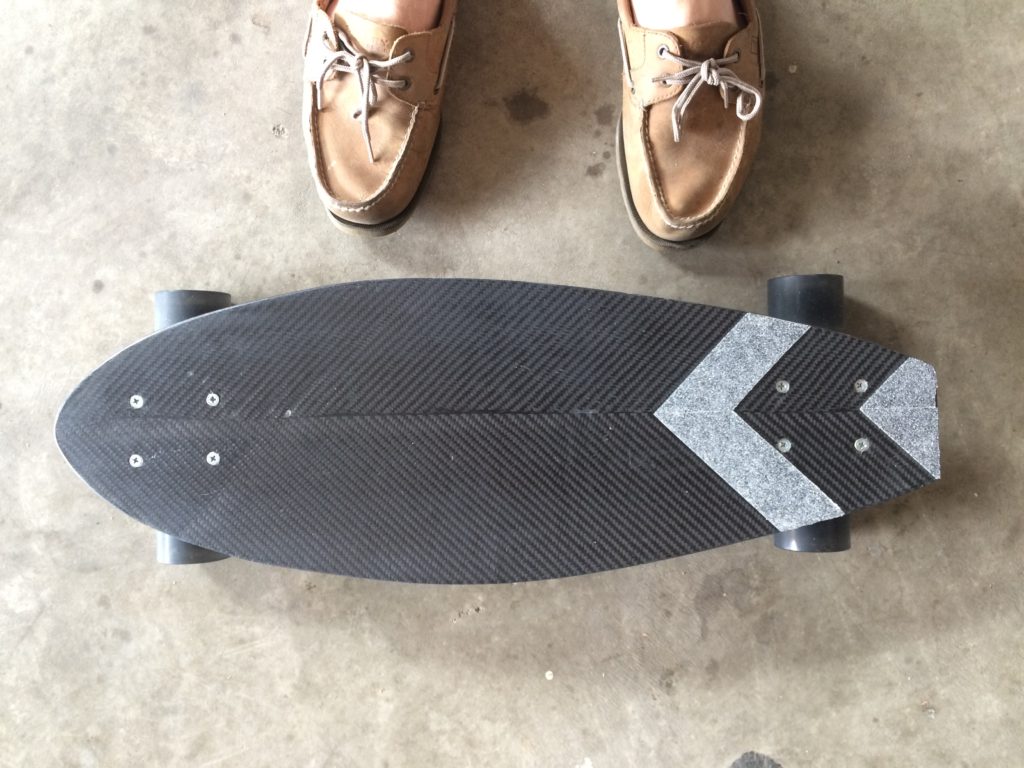 Finally, I installed some trucks I bought at a local skate shop and applied some clear grip tape that follows the “V” pattern made by the carbon weave. If I were to do this process again, I’d use a jig to drill the truck mounting holes. Mine didn’t come out perfectly straight, which doesn’t effect the way the board rides too much, but it could be better. Finally, a quick wipe down of car polish and the board was finished.
Finally, I installed some trucks I bought at a local skate shop and applied some clear grip tape that follows the “V” pattern made by the carbon weave. If I were to do this process again, I’d use a jig to drill the truck mounting holes. Mine didn’t come out perfectly straight, which doesn’t effect the way the board rides too much, but it could be better. Finally, a quick wipe down of car polish and the board was finished.
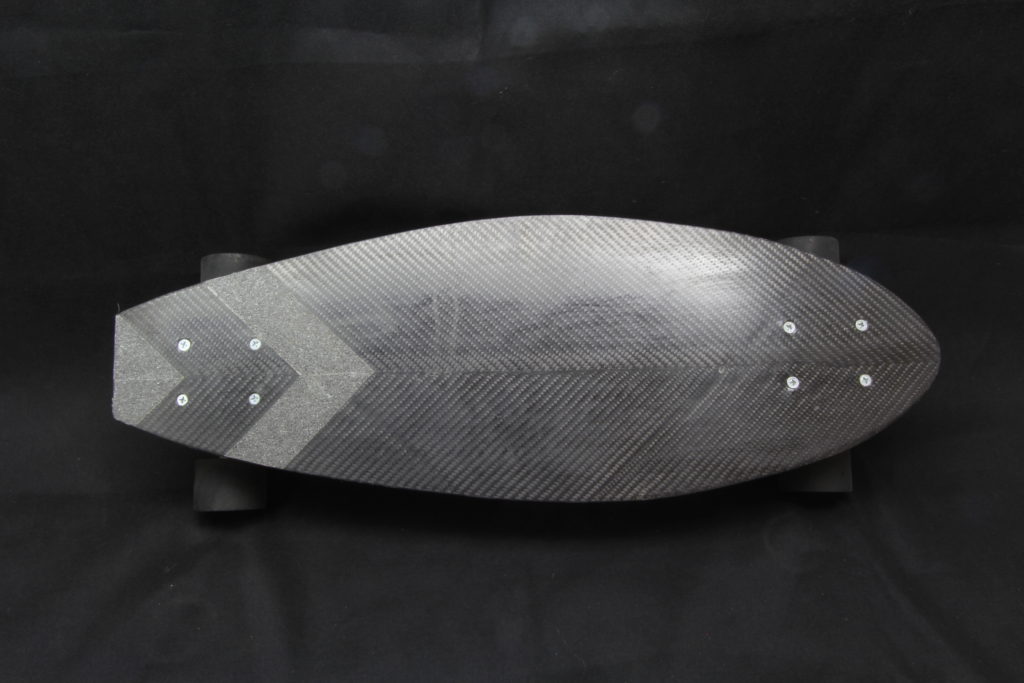
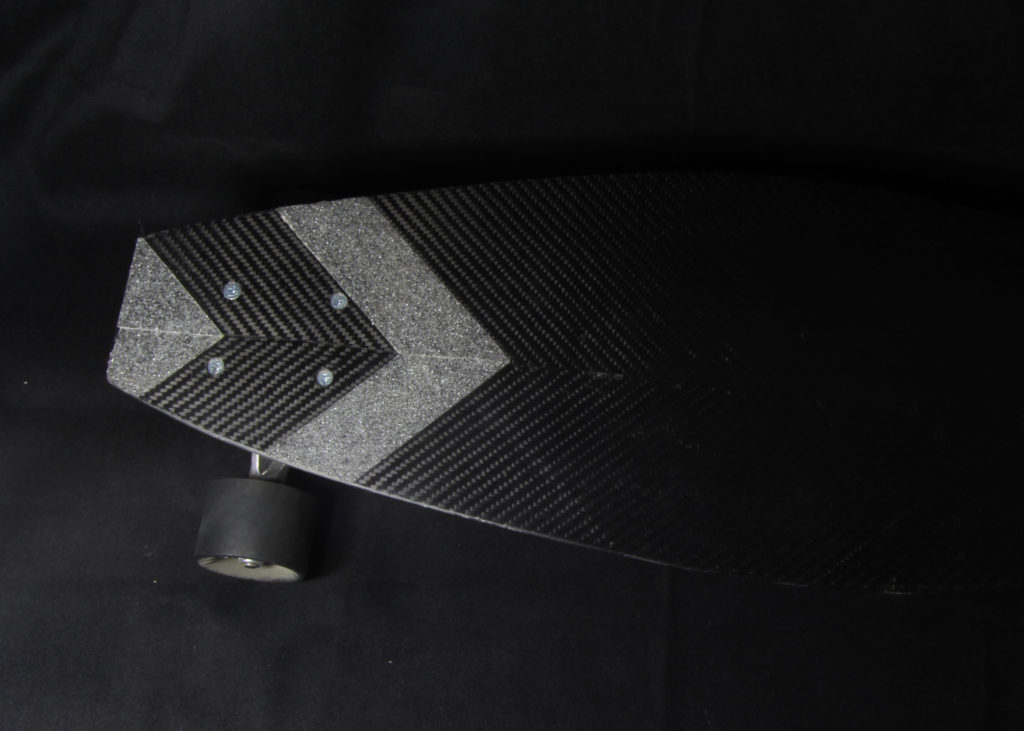 I’d estimate this board took around 50 hours of labor and perhaps a few hours of obtaining supplies. If I were to make another deck (which I’m planning on doing in May) I think I will use a very thin layer of wood for a core with several carbon layers rather than foam. I think I can get a thinner deck while still maintaining strength and even get some flex out of it. The board I created is very stiff, which is okay because it is short.
I’d estimate this board took around 50 hours of labor and perhaps a few hours of obtaining supplies. If I were to make another deck (which I’m planning on doing in May) I think I will use a very thin layer of wood for a core with several carbon layers rather than foam. I think I can get a thinner deck while still maintaining strength and even get some flex out of it. The board I created is very stiff, which is okay because it is short.
I’d like to explore making more skateboard decks from carbon and perhaps selling them. I think with my next one, I’ll work more to streamline the process and use less materials.

4 Comments. Leave new
The final product looks great. I am impressed with your work with carbon fiber. It is cool to see how we both designed boards, but our aesthetics are vastly different. I am curious about how your board rides. In professionally made boards of similar style, how do you feel your board compares? When I picked up your board, I was surprised in how light it was. It would be easy to carry around campus and ride between people. Well done!
This board turned out really great! I have actually shaped my own surfboard in the past so this post really caught my eye. I like the V-shape you used with this design, maybe you can cut out a V in the back of the board for a fish style design in a future iteration. I found the vacuum bag technique to be very interesting, and I would be curious to see the future boards that you manufacture in May. I would definitely purchase one of these!
Wow, this entire project is very professional and well done. I would vote this the best project from this class. I’m curious, how did you separate the board from the rectangle without having open edges around the cuts? Or was it cured pretty well where that wouldn’t be an issue? I think it’s a good idea that you didn’t clear coat it, as I’d be concerned if it would make the surface too slippery to get good control, but I guess you could add more of that tape. This is awesome, great work for a first attempt at carbon fiber.
Sweet project, your final product looks really clean and nice.
What is special about the polyurethane foam that it was the starting structural component? Also, what did this cost you to make and how did you plan ahead for it? I would really like to know more of those technical details because carbon fiber layups are so interesting.